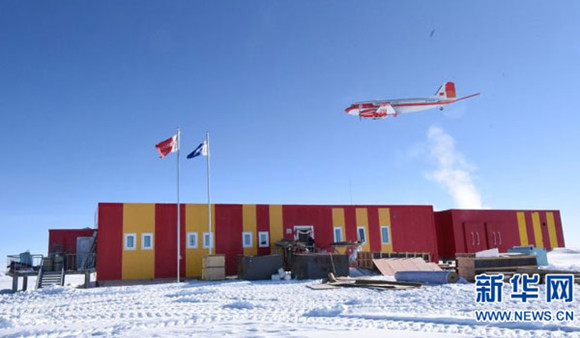

China's first fixed-wing aircraft in the Antarctic "Xue Ying 601", or "Snow Eagle", successfully clears the sky above the country's Kunlun research station located in the South Pole at an altitude of over 4000 meters on January 9, 2016. (Photo: Xinhua)
China has successfully completed the test flight of its first fixed-wing aircraft in the Antarctic, marking its establishment of a new Antarctic exploration platform.
The aircraft "Xue Ying 601", or "Snow Eagle," successfully completed a round trip between China's Kunlun research station and Zhongshan station in over 9 hours, covering a total continuous distance of over 2600 kilometers.
It also cleared the sky above the Kunlun station which is located at an altitude of over 4000 meters.
"First, the aircraft can be used to transport scientists to Kunlun Station rapidly, so that they can have more time to do research in the international frontier, such as the core of ice and astronomy. Second, it's helpful for emergency rescue. If expedition members have accidents in the inland or some other remote areas, Xue Ying 601 can rescue them in a timely fashion. Third, the establishment of an aerial platform can enlarge the scope of China's investigations in the South Pole, so that we have the ability to maintain the aerial platform comprehensively."
China has established four stations in Antarctica -- the Great Wall in 1985, Zhongshan in 1989, Kunlun in 2009 and Taishan in 2014.
Kunlun station is China's first inland station on the continent, at Dome A, the continent's highest icecap with very harsh conditions.
The success of the test flight means that China becomes the 4th country in the world with the ability to conduct aerial comprehensive scientific investigation in the South Pole. (CRIENGLISH.com)

86-10-68597521 (day)
86-10-68597289 (night)

86-10-68511095 (day)
86-10-68512458 (night)

cas_en@cas.cn

52 Sanlihe Rd., Xicheng District,
Beijing, China (100864)

